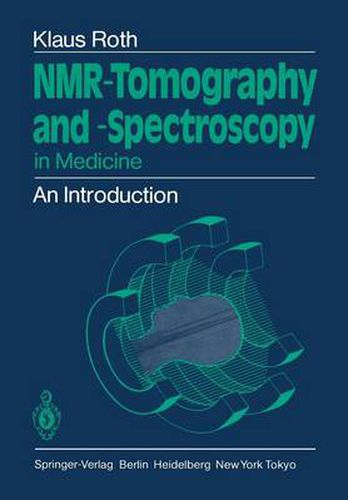Readings Newsletter
Become a Readings Member to make your shopping experience even easier.
Sign in or sign up for free!
You’re not far away from qualifying for FREE standard shipping within Australia
You’ve qualified for FREE standard shipping within Australia
The cart is loading…






This title is printed to order. This book may have been self-published. If so, we cannot guarantee the quality of the content. In the main most books will have gone through the editing process however some may not. We therefore suggest that you be aware of this before ordering this book. If in doubt check either the author or publisher’s details as we are unable to accept any returns unless they are faulty. Please contact us if you have any questions.
Even the earliest applications of nuclear magnetic resonance (NMR) spectroscopy and tomography to medical inquiries, using experimental apparatus that was primitive by today’s standards, demonstrated the extraordinary potential of the NMR method. The subsequent rapid advances in this area were due largely to the ef forts of commercial manufacturers, who, by improving magnet and computer designs, were able to produce and market instruments having a remarkable image quality. Experimental data from the ftrst systematic studies on the medical uses of NMR leave little doubt that NMR will gain a permanent place in clinical diagnosis. The clinician, then, is confronted with an entirely new diagnostic modality. Because NMR has been used extensively in chemistry and physics for years, a great many textbooks are already available on the subject. However, the majority of these have been written for the natural scientist who is well versed in mathematics and physics. Assumptions are made and terms are used that would not be appro priate for a medical or biochemical text. The goal of this introduc tion, therefore, is to discuss the principles of the NMR technique in terms that are meaningful to the medical student and medical pro fessional.
$9.00 standard shipping within Australia
FREE standard shipping within Australia for orders over $100.00
Express & International shipping calculated at checkout
This title is printed to order. This book may have been self-published. If so, we cannot guarantee the quality of the content. In the main most books will have gone through the editing process however some may not. We therefore suggest that you be aware of this before ordering this book. If in doubt check either the author or publisher’s details as we are unable to accept any returns unless they are faulty. Please contact us if you have any questions.
Even the earliest applications of nuclear magnetic resonance (NMR) spectroscopy and tomography to medical inquiries, using experimental apparatus that was primitive by today’s standards, demonstrated the extraordinary potential of the NMR method. The subsequent rapid advances in this area were due largely to the ef forts of commercial manufacturers, who, by improving magnet and computer designs, were able to produce and market instruments having a remarkable image quality. Experimental data from the ftrst systematic studies on the medical uses of NMR leave little doubt that NMR will gain a permanent place in clinical diagnosis. The clinician, then, is confronted with an entirely new diagnostic modality. Because NMR has been used extensively in chemistry and physics for years, a great many textbooks are already available on the subject. However, the majority of these have been written for the natural scientist who is well versed in mathematics and physics. Assumptions are made and terms are used that would not be appro priate for a medical or biochemical text. The goal of this introduc tion, therefore, is to discuss the principles of the NMR technique in terms that are meaningful to the medical student and medical pro fessional.